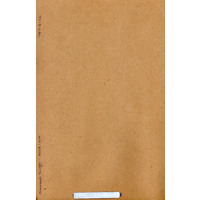Xikhigelo archive file
Metadata
Xikhigelo archive file
[ Source of title : Nessa Leibhammer using JAG materials ]
Textual record
Photographic image
JAG 1987-3-112
Description
[Source - Debra Pryor for FHYA, 2022, using spreadsheet created by Nessa Leibhammer for the South African Heritage Resources Information System (SAHRIS), from JAG materials in 2015: Object description: A doublle head-rest carved out of one piece of wood. The crossbars are identical except that one is 5mm longer. Rectangular, curved and decorated on the flattened ends with a row of zig-zags carved in relief. One lug each on outer sides. Closed arches facing sides. The lugs on the inner sides have become incorporated into the column. Three grooved pillars. Tow stretching diagonally from near the centre of the base to the outsides of the crossbars. The third pillar reaches vertically from the centre of the base to join an inverted open arch which links the two crossbars. The base is four flat circles in a row, jopined by three rectangular bars. The two outer circles support open, front-facing arches.
Object form type: Headrest;
Object material type: Wood;
Technique: Carved;
Colours: Brown;
Object age: late 19th/early 20th century;
Production place: Transvaal (now Limpopo Province);
Cultural association: Transvaal Tsonga;
Place of use: Transvaal (now Limpopo Province);
Provenance: Collected at Elim, Transvaal c1930.]
Attributions and conjectures
[Source - Nessa Leibhammer for FHYA, 2017: Comments on classification: In his 'A Preliminary Survey of the Bantu Tribes of South Africa', Union of South Africa, Department of Native Affairs, Ethnological Publications, Vol. 5, Pretoria, Government Printer, (1935): 7, 70-83, national government ethnologist, Nicholas Van Warmelo did not use the term "North Nguni". He grouped people living both north and south of the Thukela, under one umbrella term, "Natal Nguni", based on linguistic affinity. His classification was adapted by the ethnology curator, Margaret Shaw, in her 1958 "System of Cataloguing Ethnographic Material in Museums" which determined that items from the region were to be classified as "Natal Nguni: Zulu and others (not differentiated)."
According to art historian, Anitra Nettleton, the classificatory system used by art galleries and museum shifted from Shaw's model to the one where "Natal Nguni" fell away and was replaced by "North/Northern Nguni" for KwaZulu-Natal and Swaziland because scholars found it difficult to distinguish items from adjacent areas, or emigrant people from those from the KZN region. Scholars working with the JAG materials used broad ethno-linguistic categories (Zulu, Xhosa, Tsonga, Shona, Sotho, Tswana) to identify the makers/users of the objects, all of which came to JAG without much by way of provenance, and identification was based on factors such as object type, materials, formal composition, style and surface patterning (emails A. Nettleton to N. Leibhammer, 25 and 28 November 2014).]
| Event Actor | Event Type | Event Date | Event Description |
|---|---|---|---|
| Five Hundred Year Archive (FHYA) | Online curation | 2022 - | Digital image by Nessa Leibhammer |
| South African Heritage Resources Agency (SAHRA) | Digitisation | c.2015 | |
| Johannesburg Art Gallery (JAG) | Custody | 1993 - | |
| Johannesburg Art Gallery (JAG) | Making | 1993 |
If you have difficulty accessing the objects, use these links.

Contributions